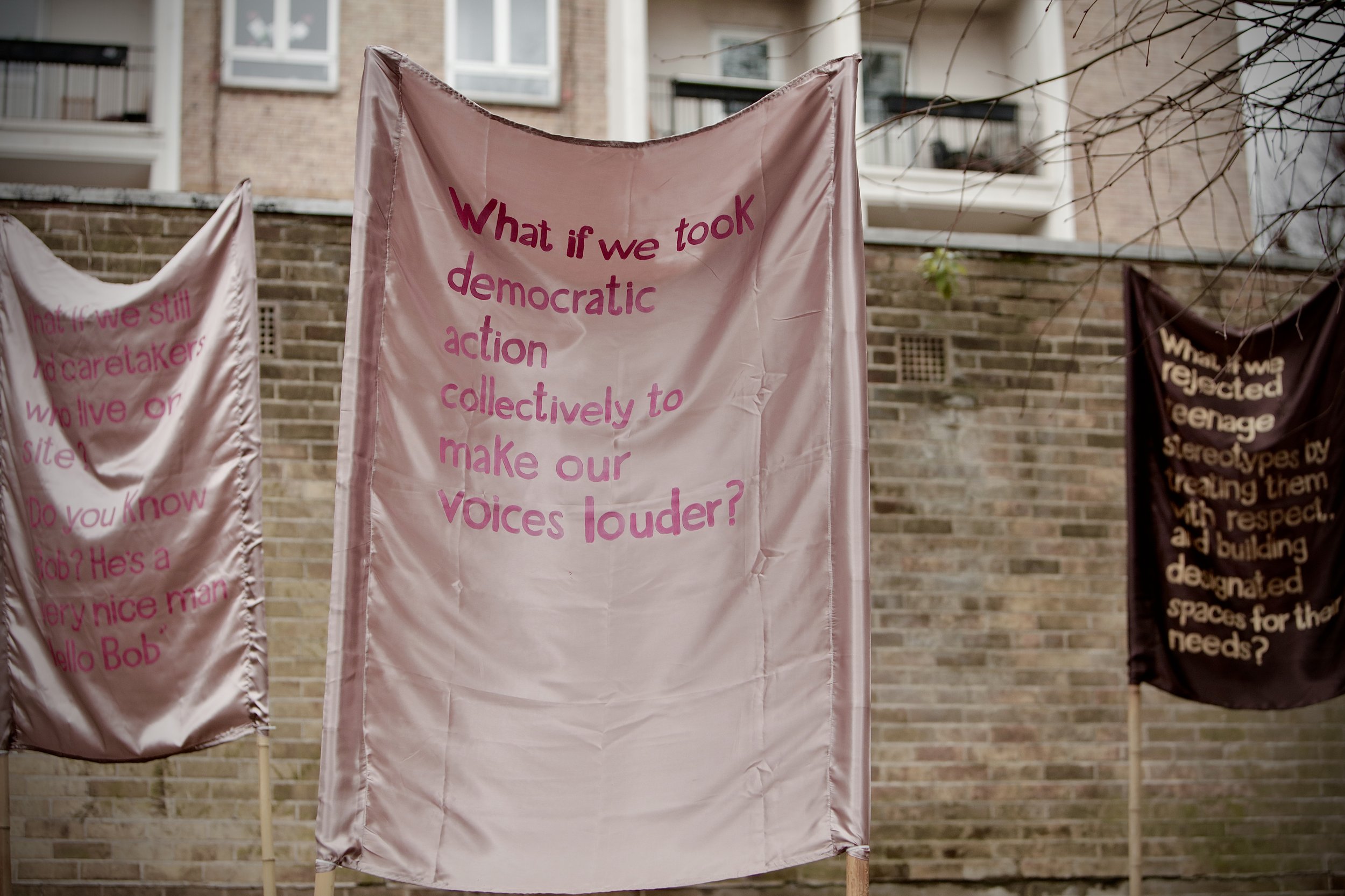The Most Inclusive Place
The Open City project looks at the social and political life of London to test whether the utopian ideal of the Open City exists in real life, and explores issues of race, migration, mobility and living with diversity. The project is funded by the UK Economic and Social Research Council and brings together a team of researchers from Open, Oxford, Warwick, and West London Universities.
In July 2022, Dana was commissioned by the Open City team to work on Hilgrove Estate, in Swiss Cottage, London. Following the conversations, interviews, and workshops which took place on the estate around the topic of inclusive public space, Dana was influenced by residents’ desire to experience artwork that is joyful and “lifts the spirits”. Mentions of the 1977 Silver Jubilee being celebrated on the estate with bunting, children playing, and coronation chicken raised the question: what if Hilgrove Estate residents were celebrated with as much jubilation as the monarchy?
UK street parties started as ‘Peace Teas’, in 1919: a way to feed children dispossessed by WWI. With these parties now organised for every royal occasion, where did the original meaning get lost? Who is now taking care of those experiencing hardships, especially during the cost of living crisis? As a result, she made 1,500 bunting flags displaying the statement ‘What if…’, and used them to embellish the estate, inviting locals and passers-by to complete the question. “Bunting” originally referred to a fabric used in the 17th century as Royal Navy signal flags which communicated vital messages.
Additionally, Dana made 22 hand-painted flags which were mounted on the public green and used ‘What if’ questions to interrogate the inclusivity of public space. These slogans aim to encourage everyone from residents to stakeholders to reimagine the area and become agents of change. How can local identity be preserved while adapting to new needs and challenges while welcoming and accepting all comers?
The Most Inclusive Place attempts to create a space in which citizens are actively encouraged to engage with their immediate surroundings, ask uncomfortable questions, hold stakeholders to account, and help democratise access to local resources and initiatives.
A small publication was compiled by the academic team and Dana Olărescu; the online version is accessible here.
Academic team:
Professor John Solomos Professor Michael Keith Professor Steve Pile Professor Karim Murji Dr Eda Yazici Dr Susannah Cramer-Greenbaum
Artistic team:
Flags hand-painted by Charley Ive Flag structures designed by Naomi Kuyck-Cohen Video credit: Alexandra Boanta Photo credits: Alexandra Boanta, Maria Tânjală
















